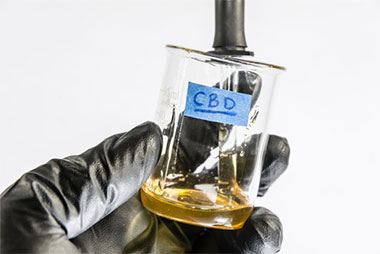For as long as the medical community has been using cannabis, they have broken it down chemically to find the most effective applications for the treatment of patients. Two primary components for therapeutic uses have been identified. These two chemicals are delta-9-tetrahydrocannabinol (also known as THC), and cannabidiol (also known as CMD). Each substance has their own set of properties, therapeutic benefits and side effects that helps serve the patients who use them.
THC is the more common substance that is identified when referring to cannabis. It tends to be in higher concentration in the marijuana plant. It is more readily binding to its corresponding receptors in the brain, which is what gives the patient the euphoric, intoxicating effect, more commonly known as “being high”. THC has been shown to have great benefits to reduce the amount of plaque in the coronary arteries, decreasing the chances of a heart attack caused by high cholesterol levels. THC has also been shown to have significant reducing effects on certain types of cancer, specifically brain and breast (though studies show that more research needs to be conducted to confirm these findings.) And finally, THC has a very significant effect on pain control, acting as an inflammatory to the system and as a neuropathic pain blocker in patients with chronic pain, specifically multiple sclerosis (MS).
CBD is the lesser known substance that is identified when referring to cannabis. It tends to be in higher concentrations in the hemp plant. It does not bind to the corresponding receptors as readily as THC, but this effect also allows it to act as a mediator between the receptor cells and THC molecules, which can decrease some of the neuropathic side effects of THC, like paranoia. CBD has shown to have beneficial effects on pain reduction in chronic pain, specifically, MS. CBD has also shown to have beneficial effects on serotonin levels in the brain, which can help treat depression, anxiety, and other symptoms of PTSD. CBD studies have demonstrated great effects on neurocognitive diseases, like Alzheimer’s disease and Parkinson’s disease, acting as a neuroprotector. CBD has also been proven to have beneficial effects on cancer-related symptoms.
Typically, there are varying levels of both THC and CBD in medicinal cannabis products, though you can obtain oils and oral capsules of each substance separately. It has also been proven that using a combination of both substances together in the treatment of the various conditions previously mentioned makes a significant difference to the patient.
Do you have your own experiences with using THC and/or CBD in your treatment plan? Please go to our Share Your Story page and tell us all about your experiences! We would love to hear how medicinal cannabis has been allowing you to live your way!

